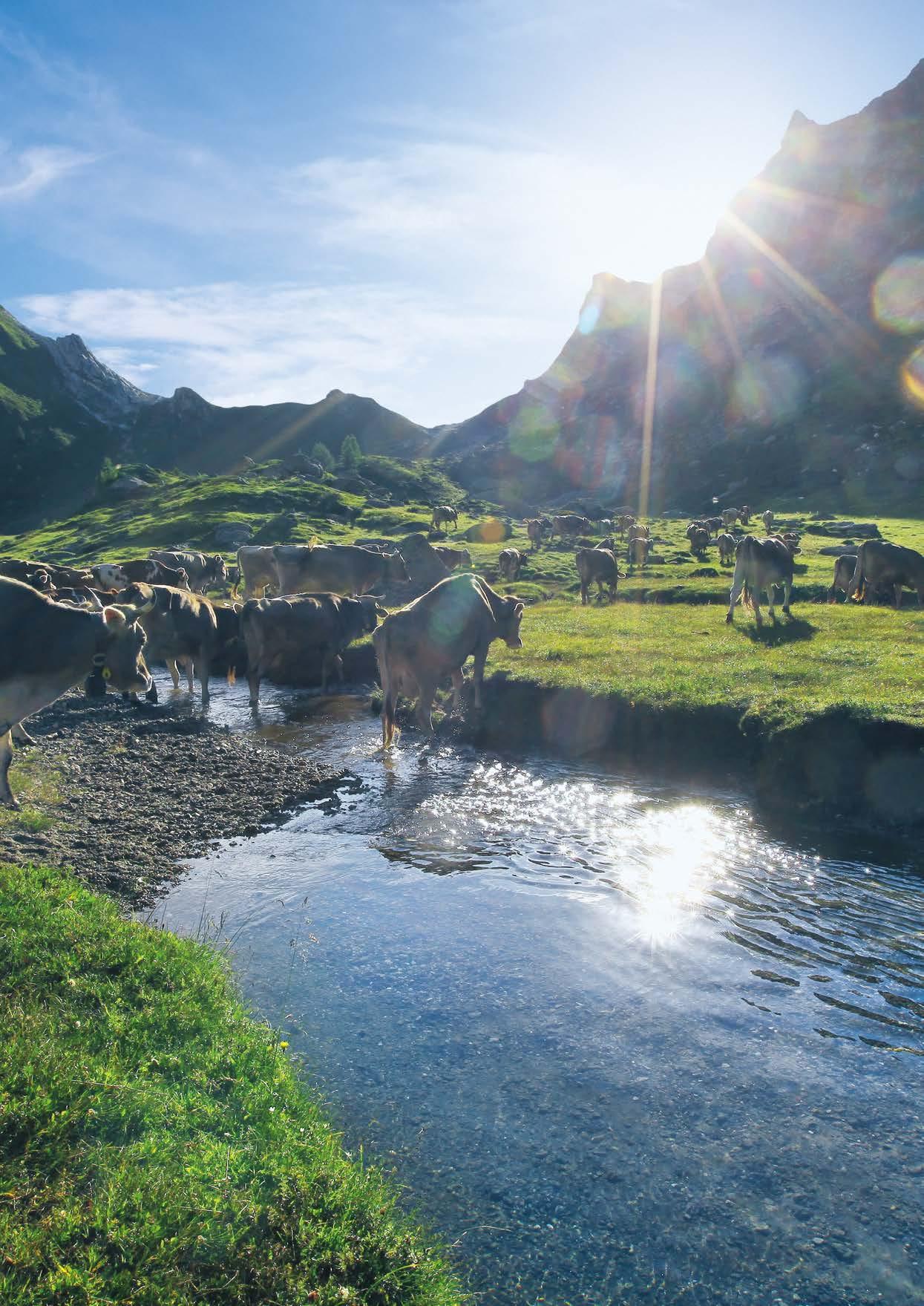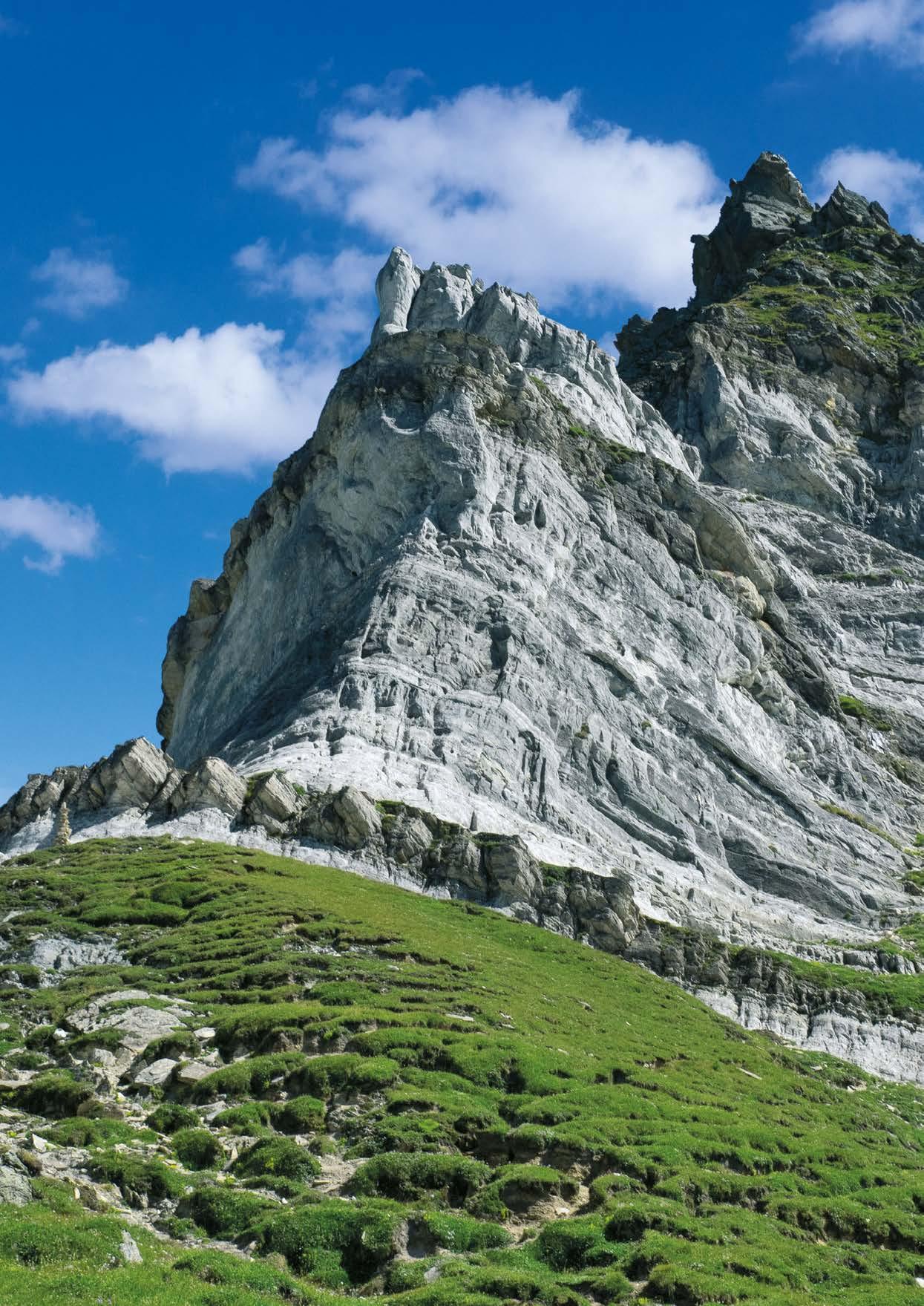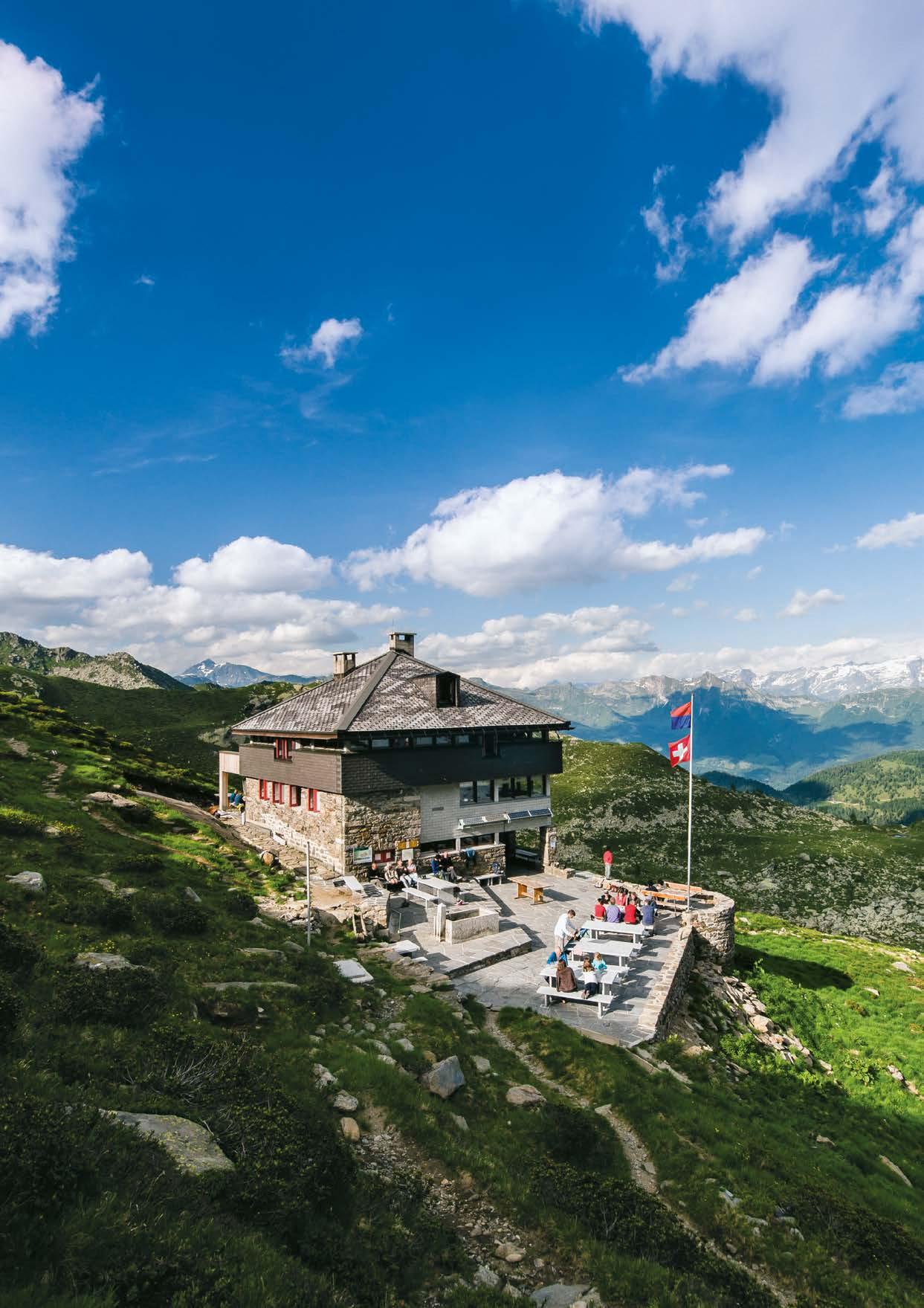
10 minute read
Report of the statutory auditor on the consolidated financial statements
Report of the statutory auditor
to the General Meeting of Banca del Sempione SA Lugano
Advertisement
Report of the statutory auditor on the consolidated financial statements
As statutory auditor, we have audited the consolidated financial statements of Banca del Sempione SA, which comprise the balance sheet, income statement, cash flow statement, statement of changes in equity and notes (pages 18 to 40), for the year ended 31 December 2016.
Board of Directors' responsibility
The Board of Directors is responsible for the preparation of the consolidated financial statements in accordance with accounting rules for banks and the requirements of Swiss law. This responsibility includes designing, implementing and maintaining an internal control system relevant to the preparation of consolidated financial statements that are free from material misstatement, whether due to fraud or error. The Board of Directors is further responsible for selecting and applying appropriate accounting policies and making accounting estimates that are reasonable in the circumstances.
Auditor’s responsibility
Our responsibility is to express an opinion on these consolidated financial statements based on our audit. We conducted our audit in accordance with Swiss law and Swiss Auditing Standards. Those standards require that we plan and perform the audit to obtain reasonable assurance whether the consolidated financial statements are free from material misstatement.
An audit involves performing procedures to obtain audit evidence about the amounts and disclosures in the consolidated financial statements. The procedures selected depend on the auditor’s judgment, including the assessment of the risks of material misstatement of the consolidated financial statements, whether due to fraud or error. In making those risk assessments, the auditor considers the internal control system relevant to the entity’s preparation of the consolidated financial statements in order to design audit procedures that are appropriate in the circumstances, but not for the purpose of expressing an opinion on the effectiveness of the entity’s internal control system. An audit also includes evaluating the appropriateness of the accounting policies used and the reasonableness of accounting estimates made, as well as evaluating the overall presentation of the consolidated financial statements. We believe that the audit evidence we have obtained is sufficient and appropriate to provide a basis for our audit opinion.
Opinion
In our opinion, the consolidated financial statements for the year ended 31 December 2016 give a true and fair view of the financial position, the results of operations and the cash flows in accordance with accounting rules for banks and comply with Swiss law.
PricewaterhouseCoopers SA, via della Posta 7, casella postale, CH-6901 Lugano, Switzerland Telefono: +41 58 792 65 00, Fax: +41 58 792 65 10, www.pwc.ch
PricewaterhouseCoopers SA is a member of the global PricewaterhouseCoopers network of firms, each of which is a separate and independent legal entity.
Report on other legal requirements
We confirm that we meet the legal requirements on licensing according to the Auditor Oversight Act (AOA) and independence (art. 728 CO and art. 11 AOA) and that there are no circumstances incompatible with our independence. In accordance with art. 728a para. 1 item 3 CO and Swiss Auditing Standard 890, we confirm that an internal control system exists which has been designed for the preparation of consolidated financial statements according to the instructions of the Board of Directors. We recommend that the consolidated financial statements submitted to you be approved.
PricewaterhouseCoopers SA
Beresford Caloia
Audit expert Auditor in charge
Lugano, 7 April 2017 Luca Vitali
Audit expert
2
A mountain of ideas
Rocks that become ideas that become energy that becomes poetry. The Campolungo mountains are strange, with their materials and morphologies that can attract the most brilliant minds, Scholars able to recognise unknown elements or new living species. Entrepreneurs able to exploit the elements to construct small food companies or immense hydroelectric plants. Writers able to transform the numerous facets of nature into cultural
messages. Travelers able to enjoy them. The transit of man changes and at the same time hands down the landscape. It subjects it to his own way of living, understanding and generating profit. With a unique network of protection from the risk of destroying the common good: its common sense. The North Star which guides those who are aware of the value of things and possess knowledge to progress and tools to act. That which has always been the guiding value of Banca del Sempione.
Between history and culture
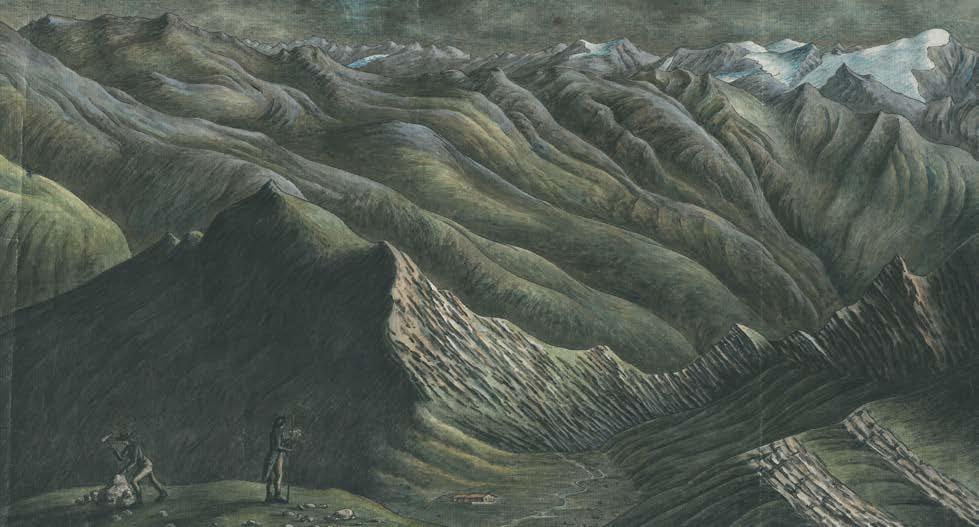
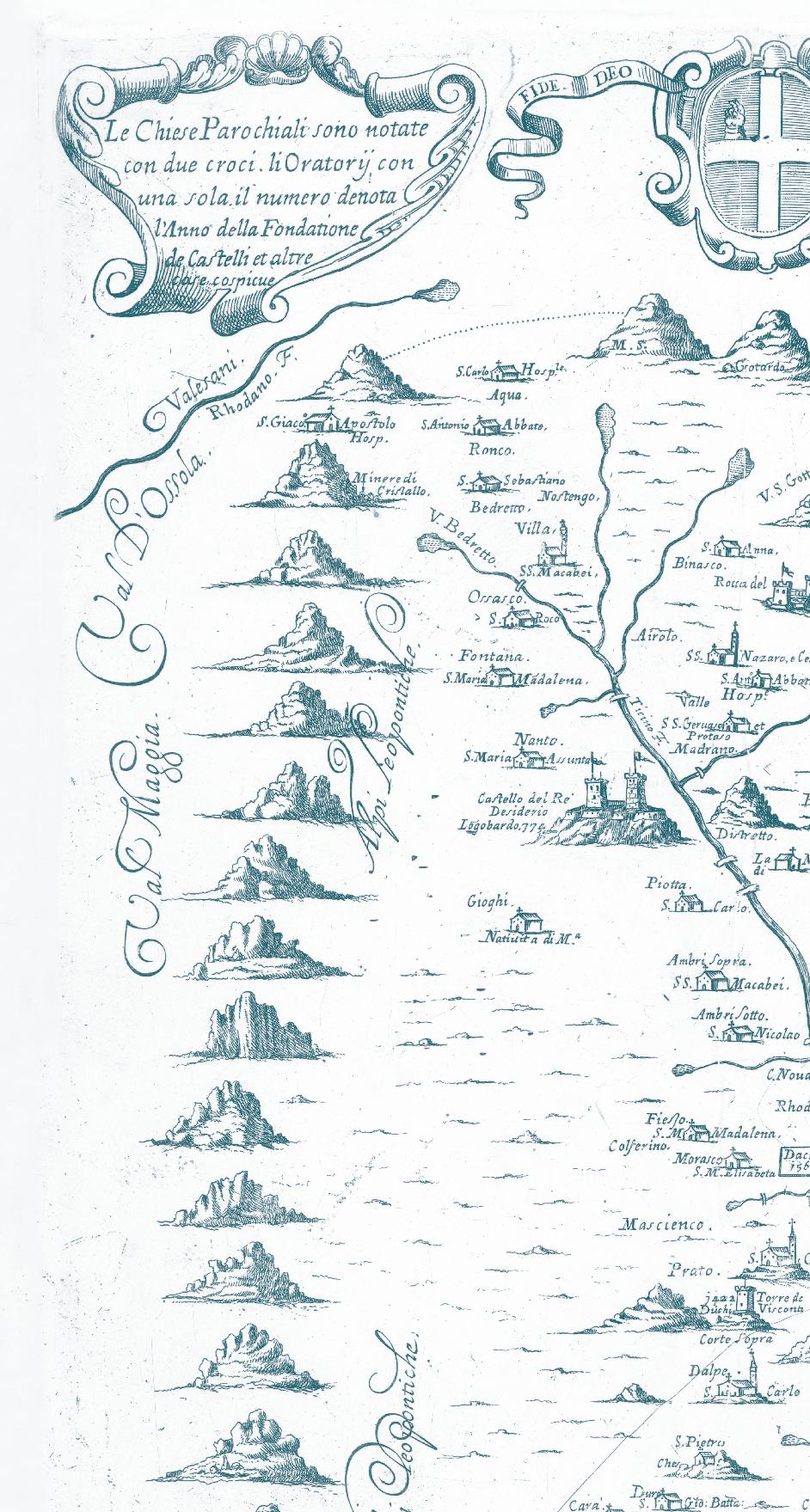
Previous page:
In the past, Lake Tremorgio was crossed by boat
In sequence:
A watercolour by H.C.E. von der Linth depicting the Cadonighino pass
An engraving depicting Déodat de Dolomieu, by Ambroise Tardieu
The Tremorgio hydro electrical power station, of the Azienda Elettrica Ticinese, in Rodi The particular location of the Campolungo region, like a divide between the Leventina and Maggia valleys, its lakes and the alpine fauna and flora that inhabit it, and above all its incredible geological wealth, are the reasons why its history has been characterised by a growing interest since the Nineteenth century, particularly in the scientific field, and way beyond its borders. With the birth of geology as a scientific discipline, the Campolungo fold would allow its name to spread throughout the world. One of the first scholars to describe the area was the Frenchman Déodat de Dolomieu, a world-famous geologist. It was in his honour that the white rock also found in the Campolungo region was baptised “dolomite”. In 1801, a few months before he died, Dolomieu travelled to Leventina on his last journey to the south of the Alps. During that summer, he climbed from Prato up to “Campo Longo”, as it was called at that time. He reached the Cadonighino Pass, from where he admired the particular formation of the rock: “de ce col au delà de la combe on voit en face une grande couche de dolomie qui fait de très singuliers contours” he wrote in his diaries. Just a few years later, on 30th August 1804, another scholar would be “bewitched” by this area: Hans Conrad Escher von der Linth from Zurich, an eclectic illuminist, expert designer and water-colours painter, politician and selftaught geologist. He was moved by the deposits of a particular mineral, Tremolite. From his 191 alpine expeditions which would make him the best expert of the Swiss Alps of his time, stands out the one where he climbed from Dazio Grande to lake Tremorgio and finally to the Campolungo Pass. Here Escher observed the various types of Tremolite (white, grey, vitreous) in its various outcrops: “the most frequent at Campolongo is the common Tremolite in the form of thin, elongated stems that flake into rayed bands” he noted. Impressed by the view of the Pass, it is here that he drew the famous watercolour with a north-east view of the Cadonighino Pass, till this day kept in the central Library of Zurich. During his descent from the Pass he noted that the grey dolomite contained only grey Tremolite. Escher left a valuable inheritance to those who came after him: he was the first scholar to accurately describe the various types of dolomite and to observe that it extended from east to west for 2.5 kilometres, and above all to hypothesize the Triassic origin of the rock formations. Another presence in the region, the water of the small lakes and streams, is at the basis of another important development which revolutionised the natural landscape: we are at the dawn of the production of hydroelectric energy at the end of the Nineteenth century. In 1899 the Engineer from Lavorgo Raffaele Frasa requested a licence for the waters of Lake Tremorgio, equal to 9 million cubic metres, through the Lagasca stream as far as the river Ticino. Exploitation of hydro-power from the beginning of the Twentieth century would allow economic and social progress of the canton without precedence.
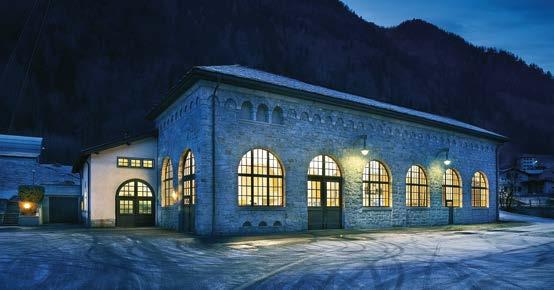
The Tremorgio hydro-electric power station in Rodi, built between 1918 and 1924, is currently the oldest pumped storage plant still running in the Leventina valley: with its 7 GWh a year, it is enough to satisfy the requirements of 1,750 households. The golden age of the construction of hydroelectric dams and barrages, which coincided with the second half of the Twentieth century, imposed new projects to link the valleys. The Tremorgio cablecar was part of a series of cableways which no longer exist today, and which connected Rodi to Fusio, in the Lavizzara valley, passing right over Campolungo. It was used to transport cement for the construction of the Sambuco dam by Officine idroelettriche della Maggia.
The economic boom of the sixties would give new blood to the alpine tourism and economy. The Campolungo region would become a popular tourist destination. The patriciate of Prato Leventina, the owner of the Campolungo and the Tremorgio, made large investments in the dairy sector: cowsheds, farmhouses and cheese factories equipped to produce milk and cheese which still continues today, for example, on Alpe Cadonigo. Still divided into three sectors (Cadonighino for milk, Cadonigo, Casorei and Campolungo for cheese), it produces, during the season, 1,600 whole cheeses with a unique flavour, thanks to the presence of as many as 400 species of alpine grasses. The historian Mario Fransioli, an important personality from the Leventina, in his appreciated monography about Prato, referred to the “alpe di Tremorgio, with its meadows spread all around the lake” and to the court of Campolungo “with its farm at an elevation of 2,086 metres and pasture lands reaching up to an elevation 2,138 metres (’ul Vanétt’ at ’i Caucistri’)”, inhabited “almost from 20th July to 15th August in good years”. The Campolungo charming scenery could not fail to whet the appetite of other great figures of the Ticino cultural world, starting from the writer who was the greatest literary spokesman for the region, Giorgio Orelli, born in Airolo but soon moving to Prato. His was the “pearl” of the Tremorgio, referring to the lake: “mi fermo d’improvviso tra i calcestri biancheggianti del passo, davanti a uccelli dal collo di pietra” (I stop suddenly among the whitish limestone cliffs of the pass, before birds with stone necks) says a poem called “Campolungo”. The free poetic reference to the “caucìstri” or “caucéstri”, as the white stone was known in the local dialect, is clear. And again Orelli “(...) like the pheasants of
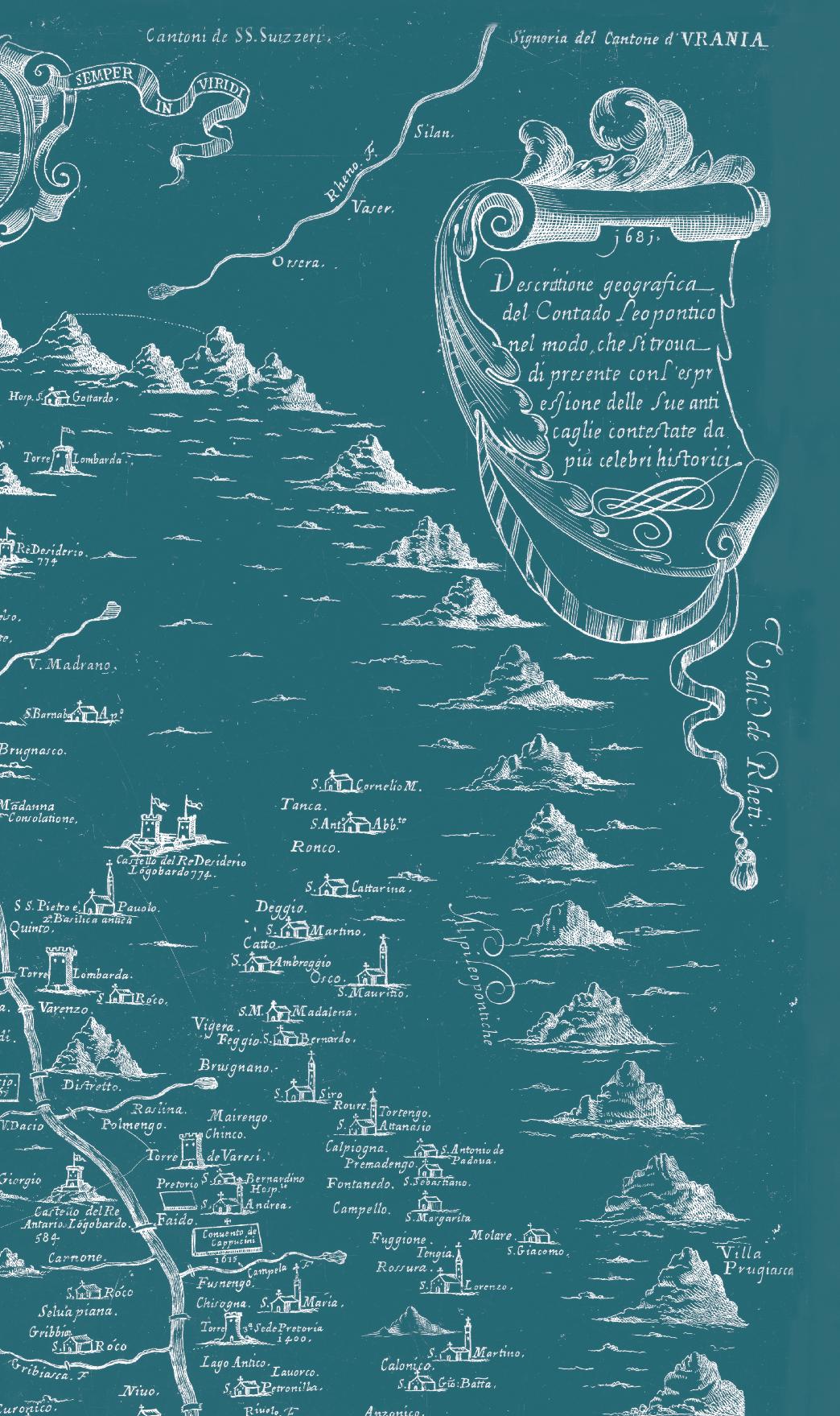
the Tremorgio listened to from the cliff which climbs up to the Campolungo” in the work called “Moosakerweg”. Thanks to the tributes paid by Orelli in his prose work entitled ”Un giorno della vita” (1961) and collected poems called “Sinopie” (1977) and “Spiracoli” (1989), the Campolungo became a narrative subject, a literary topic, a subject of study for the following generations, contributing not only to giving it a symbolic aura, but also to handing it down to posterity for ever. So, in a work entitled “La roccia e il ferro” dedicated to the upper Leventina as a transit and border area, the youngest poet Favio Pusterla also tells of how “(...) beyond the huge basin of the upper Piumogna and the buttresses of the Campolungo, under the white dolomites of the Venett Pass, the “pearl” of the Tremorgio would open up (...)”.
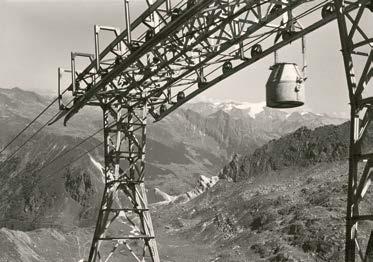
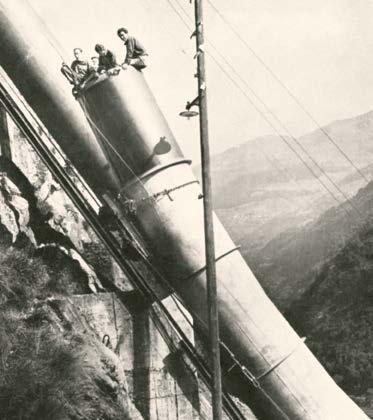
In sequence:
The old cableway for transporting cement to the site of the Sambuco dam
Alpe Casorei
A moment in the construction of the Tremorgio penstock
Following page:
The poet Giorgio Orelli
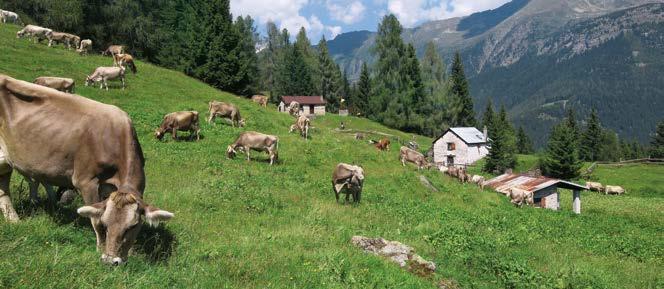
Campolungo
Along a slope already favoured by pheasants I come to where the lucky ones don’t dawdle, on a wide plain veined by newly cracked streams, their banks scattered with flowers like snow-flakes. Fog creeps in, distances the mountaintops. An anxiety hunts me. I stop suddenly among the whitewashed limestone of the pass, in front of stony-necked birds.

At my shot the moorhens take flight, disappear into the fog that now pricks my memory.
(Giorgio Orelli, Selected Poems (1944-1213), translated by Marco Sonzogni and Ross Woods. Foreword by Pietro De Marchi, Toronto-Buffalo-Lancaster (U.K), Guernica, 2015)
Other activities of the Group
50 Accademia SGR (Società di gestione del risparmio) SpA
52 Base Investments SICAV
56 Sempione SIM (Società di intermediazione mobiliare) SpA
59 Banca del Sempione (Overseas) Ltd.

